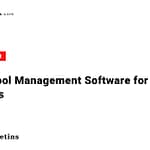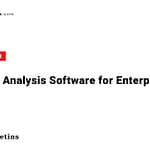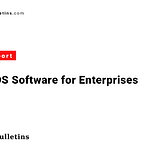Introduction
In 2025, remote work is a core part of enterprise operations. Choosing the right remote working software is crucial for productivity, collaboration, and operational efficiency. This review evaluates five leading platforms to help enterprises choose a fit for their team size and workflows.
Methodology
We evaluated each platform on these criteria:
- Ease of Use: Interface, learning curve, accessibility.
- Core Features: Collaboration, project management, communication tools.
- Integration Capabilities: Connectors with Slack, Google Workspace, CRMs, etc.
- Scalability: Suitability from small teams to large enterprises.
- Pricing: Affordability and plan flexibility.
- Customer Feedback: Ratings and reviews from multiple platforms.
Top 5 Remote Working Software for Enterprises
1. Miro
Overview: Miro is an online collaborative whiteboard ideal for brainstorming, workshops and visual planning.
Key Features
- Infinite canvas, sticky notes, voting and commenting
- Pre-built templates for design sprints and agile workflows
- Real-time collaboration
- Integrations with Slack, MS Teams, Google Drive
Benchmark: Ease of Use: Excellent • Data Integration: Strong • Visualization: Outstanding • Scalability: Good
Pricing: Free plan; Starter $8/user/mo; Business $16/user/mo; Enterprise custom.
Customer Rating:
Average Ratings:4.7/5
Pros: Versatile templates
Cons: Can overwhelm beginners.
2. Wrike
Overview: Wrike is a robust project management platform suitable for medium to large enterprises with complex projects.
Key Features
- Custom workflows, time tracking, workload management
- Gantt charts, Kanban boards, dashboards
- Document proofing and advanced reporting
Benchmark:
- Ease of Use: Good
- Data Integration: Excellent
- Visualization: Strong
- Scalability: Outstanding
Pricing:
- Free plan: Available
- Professional: $9.80/user/mo
- Business: $24.80/user/mo
- Enterprise: custom pricing
Customer Rating:
Average ratings: 4.6/5
Pros: Strong reporting
Cons: Complex for new users.
3. Notion
Overview: Notion is an all-in-one workspace for notes, docs, databases and lightweight project management.
Key Features
- Customizable templates, databases and wikis
- Real-time collaboration and rich media embedding
- Offline access and mobile apps
Benchmark:
- Ease of Use: Excellent
- Data Integration: Moderate
- Visualization: Strong
- Scalability: Good
Pricing:
- Free plan : Available
- Plus $8/user/month
- Business $15/user/month
- Enterprise: custom plans
Customer Rating:
- Average ratings: 4.5/5
- Pros: Flexible
- Cons: Limited integrations.
4. Loom
Overview: Loom is a video messaging tool for asynchronous communication — great for reducing meeting load.
Key Features
- Screen & camera recording with instant sharing
- Time-stamped comments, basic editing and analytics
- Integrations with Slack, Google Drive, Notion
Benchmark:
- Ease of Use: Excellent
- Data Integration: Moderate
- Visualization: Strong
- Scalability: Good
Pricing:
- Free plan: Available.
- Business $8/user/month
- Enterprise: custom plan
Customer Rating:
- Average ratings: 4.7/5
- Pros: Great asynchronous comms;
- Cons: Limited editing.
5. ClickUp
Overview: ClickUp is a unified work platform combining tasks, docs, goals, time tracking and more.
Key Features
- Multiple task views (List, Board, Gantt, Calendar)
- Goals, workload, time tracking and docs
- Integrations with 1,000+ apps
Benchmark:
- Ease of Use: Good
- Data Integration: Excellent
- Visualization: Strong
- Scalability: Outstanding
Pricing:
- Free plan: Available
- Unlimited: $5/user/month
- Business: $12/user/month
- Enterprise: custom plan
Customer Rating:
- Average ratings: 4.6/5
- Pros: Very feature-rich
- Cons: Learning curve for beginners.
Comparative Analysis Table
| Software | Ease of Use | Data Integration | Visualization | Scalability | Starting Price | Free Trial |
|---|---|---|---|---|---|---|
| Miro | Excellent | Strong | Outstanding | Good | $8/user/month | Yes |
| Wrike | Good | Excellent | Strong | Outstanding | $9.80/user/month | Yes |
| Notion | Excellent | Moderate | Strong | Good | $8/user/month | Yes |
| Loom | Excellent | Moderate | Strong | Good | $8/user/month | Yes |
| ClickUp | Good | Excellent | Strong | Outstanding | $5/user/month | Yes |
💡 Tip: On small screens the table stacks into card-like rows for readability. You can also swipe horizontally to view the full table.
Recommendations for Enterprises
- Budget-Conscious: ClickUp — strong feature set at an affordable starting price.
- Creative & Visual Teams: Miro — excellent for brainstorming and visual collaboration.
- Documentation & Knowledge: Notion — a flexible hub for notes and wikis.
- Asynchronous Communication: Loom — reduces meeting load with video messaging.
- Large Project Management: Wrike — suited for complex, enterprise-scale projects.
FAQ
What is remote working software?
Remote working software covers tools that enable distributed teams to communicate, collaborate, manage projects, and share knowledge without being co-located.
Which remote collaboration tool is best for enterprises?
It depends on needs: Wrike or ClickUp for robust project management, Miro for creativity and workshops, Notion for documentation, and Loom for async video communication.
Which tool is most budget-friendly?
ClickUp offers one of the most affordable starting prices while providing a broad feature set suitable for many teams.
Conclusion
Choosing the right remote working platform depends on your enterprise’s priorities—budget, creativity, documentation, or asynchronous communication. Use vendor trials and pilot programs to validate fit before a full rollout.


















